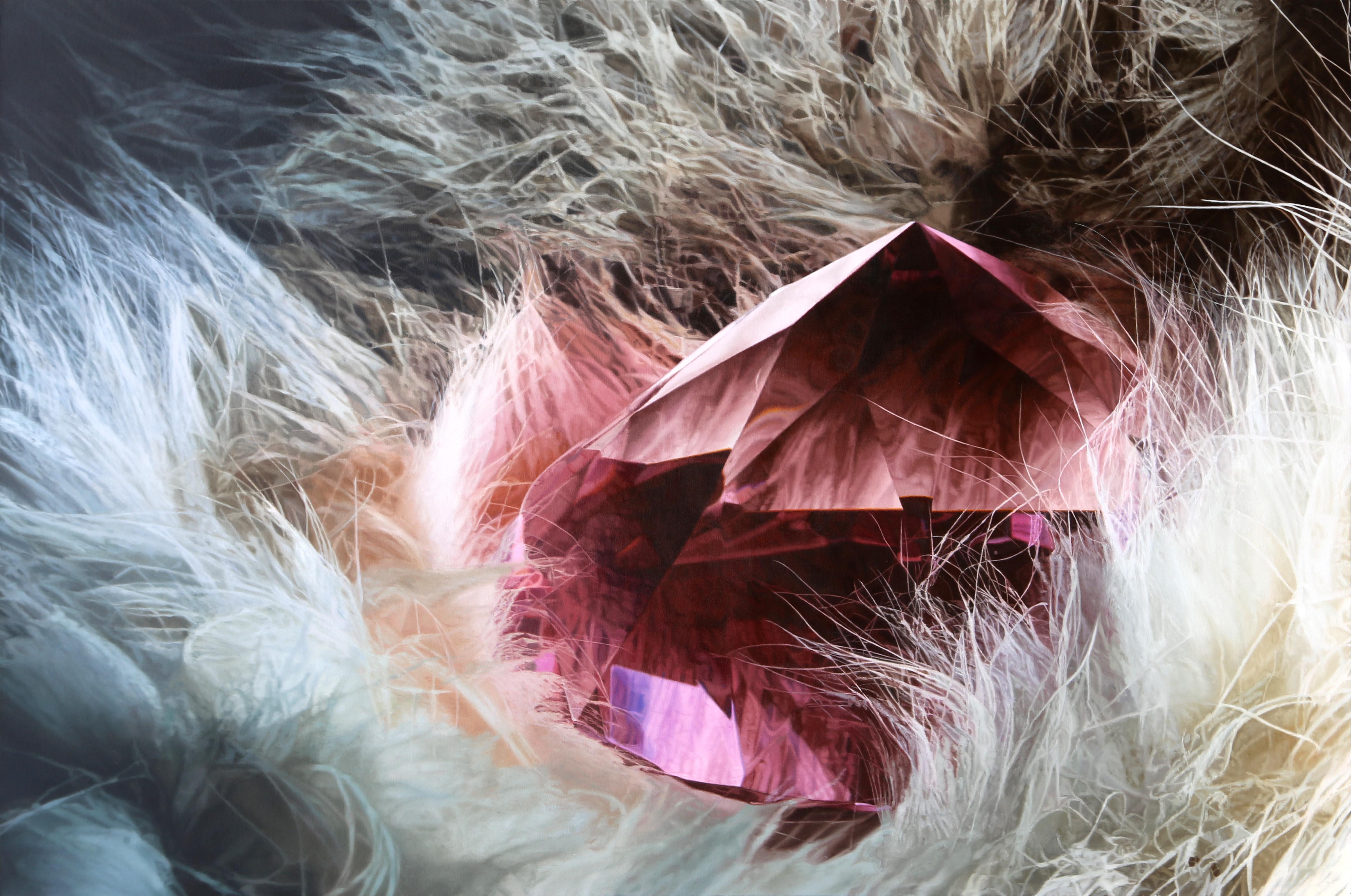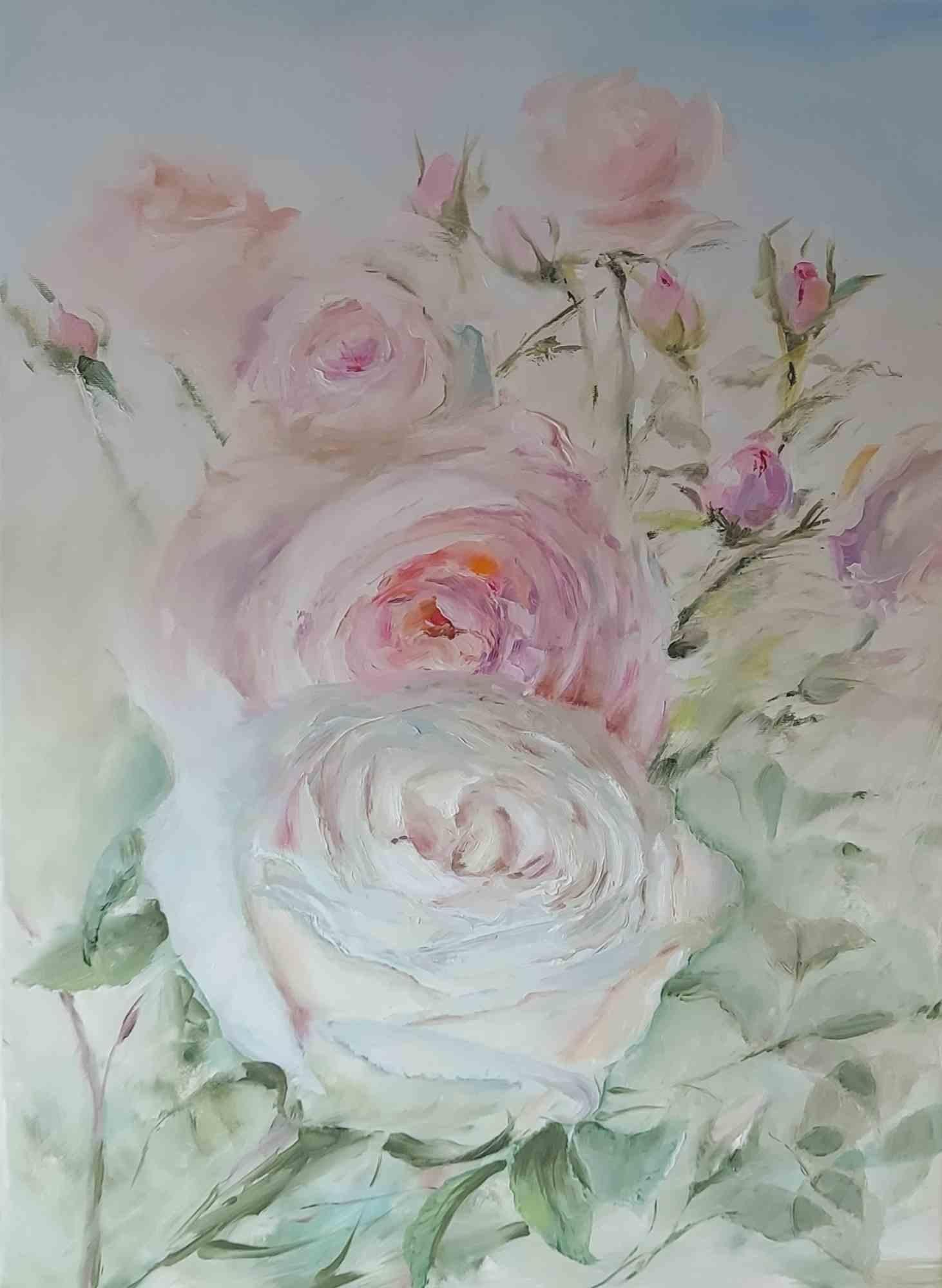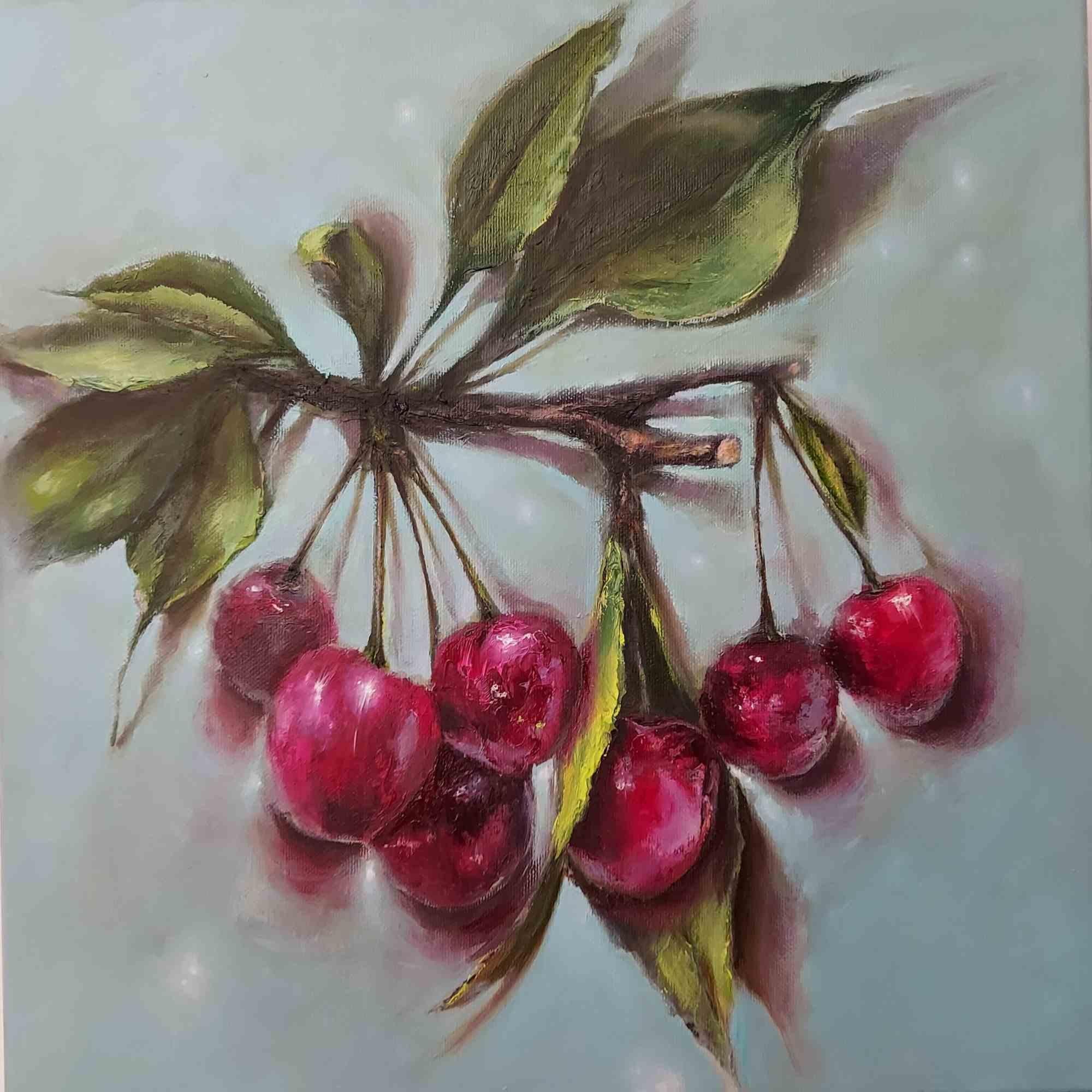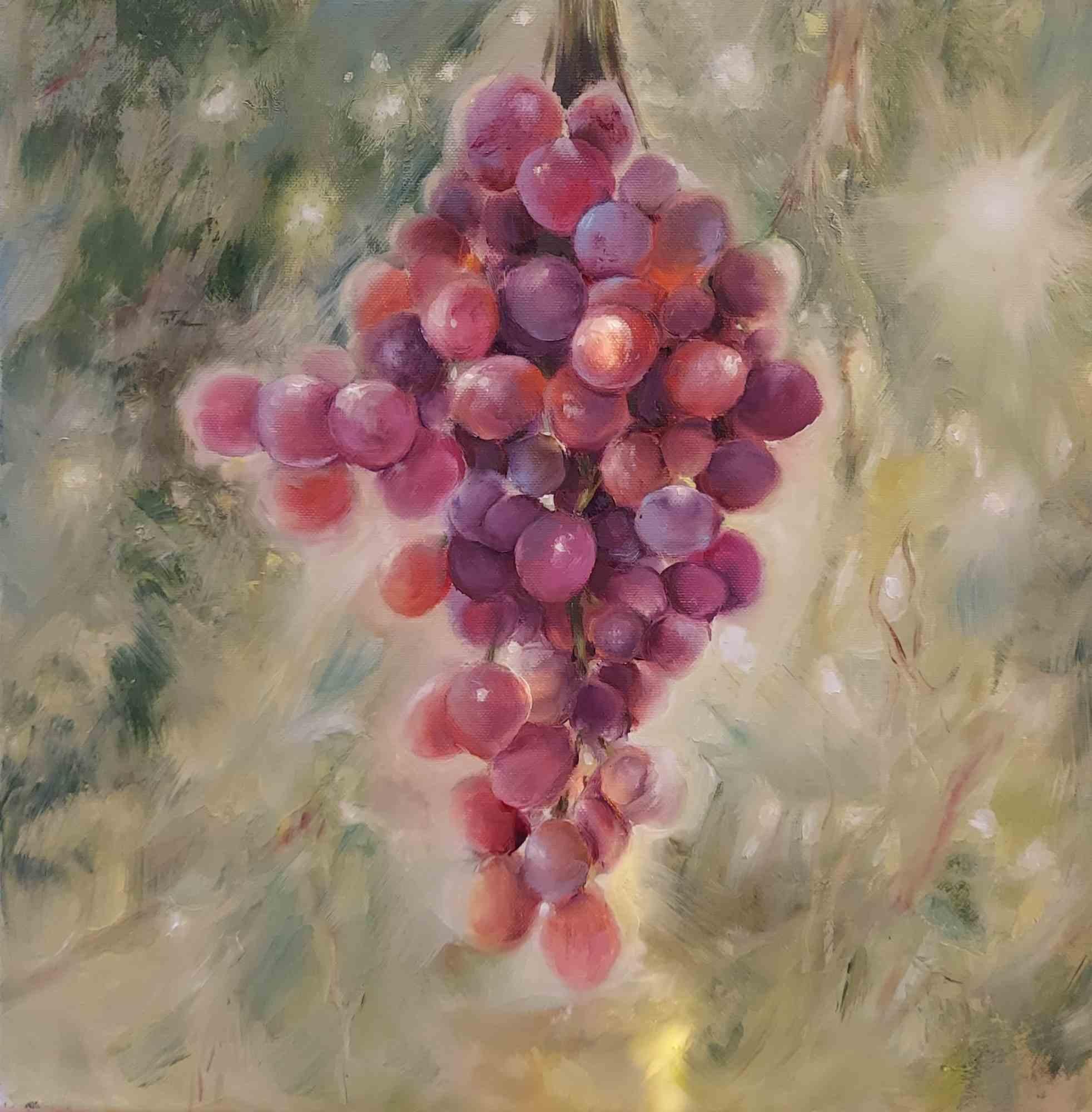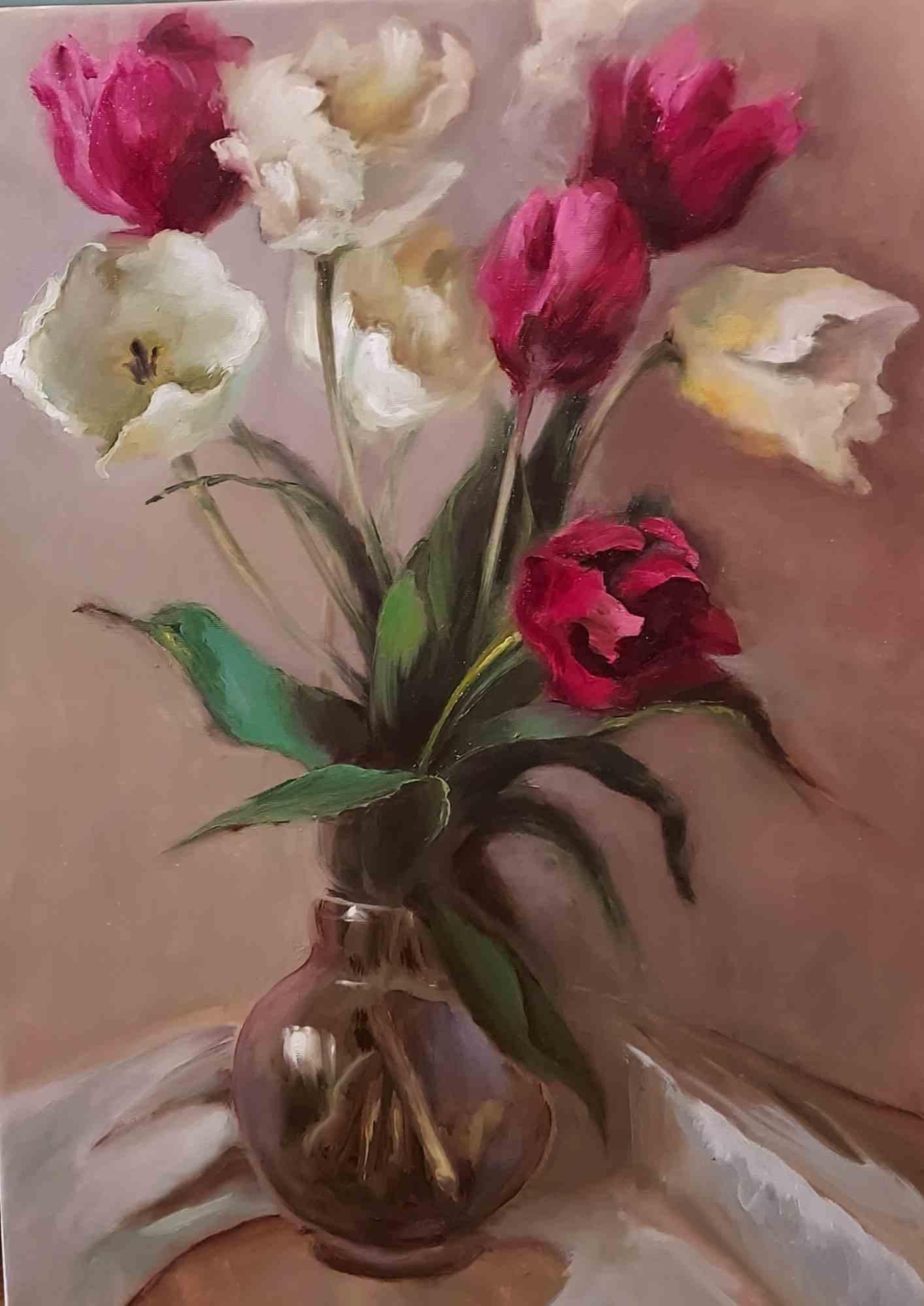Items Similar to Still Life of a Copper Pan and Pewter Jug
Want more images or videos?
Request additional images or videos from the seller
1 of 5
Still Life of a Copper Pan and Pewter Jug
About the Item
Francois Bonvin (1817-1887) French
Still Life of a Copper Pan and Pewter Jug
Oil on Canvas
Indistinctly Signed
9.5” x 16” (24 x 40.7cm)
Bonvin was born in humble circumstances in Paris, the son of a police officer and a seamstress. When he was four years old his mother died of tuberculosis and young François was left in the care of an old woman who underfed him. Soon his father married another seamstress and brought the child back into the household. Nine additional children were born (one of whom was Léon Bonvin). The family's resources were severely strained, and to make matters worse his stepmother took to abusing and undernourishing François.
The young Bonvin started drawing at an early age. His potential was recognized by a friend of the family, who paid for him to attend a school for drawing instruction at age eleven. Bonvin attended the Ecole de Dessin in Paris from 1828 until 1830, when his father apprenticed him to a printer. Bonvin later studied at the Académie Suisse, but was mostly self-taught as an artist. He considered François Granet, to whom he showed some of his drawings in 1843, his only mentor. Bonvin spent his free time at the Louvre where he especially appreciated the Dutch old masters and was welcomed by the collector Louis La Caze.
Bonvin married a laundress at the age of twenty, at about the same time that he secured a job at the headquarters of the Paris police, where he worked until 1850. It was during this period that he contracted an illness which would trouble him for the rest of his life.
Bonvin exhibited three paintings in the Salon of 1849, where he was awarded a third-class medal. He exhibited in the Salon of 1850 with Courbet, and won recognition as a leading realist, painting truthfully the lives of the poor which he knew at first hand. His paintings were well received by critics and by the public. Although his work had elements in common with Courbet's, his modestly scaled paintings were not seen as revolutionary. He was awarded the Légion d'honneur in 1870.
His subjects were still life and the everyday activities of common people, painted in a style that is reminiscent of Pieter de Hooch and Jean-Baptiste-Siméon Chardin. It is the latter who is especially recalled by Bonvin's delicate luminosity.
In 1881 he underwent an operation which did not restore him to health, and he became blind. A retrospective exhibition of his work was held in 1886. He died at Saint-Germain-en-Laye in 1887.
In 1978 Editions Geoffroy-Dechaume published Les Maitres du XIX Siecle: Bonvin, Professor Gabriel Weisberg's critical analysis on the life and work of the artist.
- Attributed to:François Bonvin (1817 - 1887, French)
- Dimensions:Height: 9.5 in (24.13 cm)Width: 16 in (40.64 cm)
- Medium:
- Period:
- Condition:
- Gallery Location:Stoke, GB
- Reference Number:1stDibs: LU44637403592
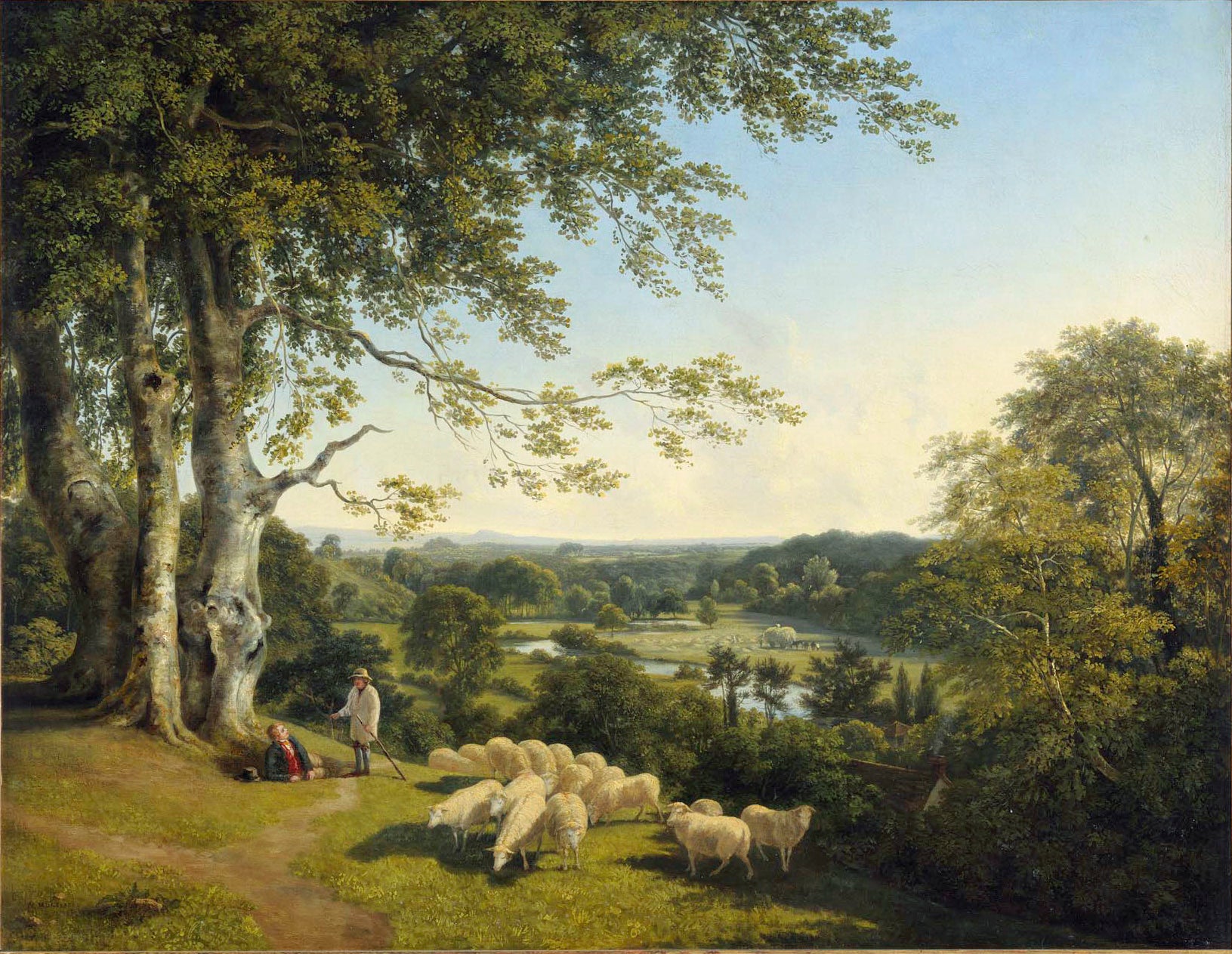
About the Seller
5.0
Recognized Seller
These prestigious sellers are industry leaders and represent the highest echelon for item quality and design.
Platinum Seller
These expertly vetted sellers are 1stDibs' most experienced sellers and are rated highest by our customers.
Established in 2009
1stDibs seller since 2016
147 sales on 1stDibs
Typical response time: 2 hours
Associations
LAPADA - The Association of Arts & Antiques DealersInternational Confederation of Art and Antique Dealers' AssociationsThe British Antique Dealers' Association
- ShippingRetrieving quote...Ships From: Stoke, United Kingdom
- Return PolicyA return for this item may be initiated within 14 days of delivery.
More From This SellerView All
- A German Pointer with hunting EquipmentLocated in Stoke, HampshireGerman School (18th century) A German Pointer with hunting Equipment Oil on canvas Canvas Size 42 x 35 in Framed Size 48 x 41 inCategory
18th Century Old Masters Animal Paintings
MaterialsOil
- A still life of flowers in an urn with a parrot, melon, pomegranates and figs...By Aniello Ascione (Naples, news from 1680 to 1708)Located in Stoke, HampshireAniello Ascione (Naples, fl. 1680-1708) A still life of flowers in an urn with a parrot, melon, pomegranates and figs at its base, a view to an ornamental garden beyond Oil on canvas 59 3/4 x 39 3/4 in Provenance The Alexander Family Collection, Milford House, Co. Carlow, Ireland The latter half of the 17th century and earlier 18th century marked the golden age of Neapolitan still-life painting and Aniello Ascione was one of its most highly regarded exponents. His sumptuous paintings, brimming with fecund produce of the Mediterranean and painted in rich colours, were eagerly sought after by those who wished to decorate their palaces in that city. Naples in the seventeenth century had established a significant reputation and artistic tradition of producing flamboyant and technically excellent still-lifes which had largely been initiated by Caravaggio who, having stated that it required as much effort to paint a good flower piece as a figure subject, helped to revolutionise and eventually abolish the closed attitude to genres of painting. Caravaggio maintained that art was the mirror of nature and his superb Basket of Fruit, now in the Ambrosiana in Milan and painted in 1597, marked the birth of European still-life painting. Throughout the 17th century, Neapolitan still-life painting was founded on the principles demonstrated by Caravaggio and these artists seem to have been the only ones to correctly understand and utilise his ideas. These paintings were noted for their vibrant portrayals of flowers, often in great abundance, fruit and birds done in an elegant and decorative manner. Luca Forte (c.1615- c.1670) was one of the first Neapolitan artists to adopt the Caravaggesque naturalism in this genre of painting and with exceptional creativity sweeping through the city in the 1630s, he was soon followed by Paolo Porpora and Guiseppe and Giovanni Battista Recco and the Ruoppolo family. When Abraham Brueghel arrived in Naples in about 1670, his influence accelerated the transition of the portrayal of still-life to a more baroque style often epitomised by a mass of flowers, cascading over classical objects like water. This more baroque style was taken up by a new generation of painters and one of the first and most prominent of these was Andrea Belvedere (1652-c.1732). He taught Nicola Casissa and other artists working in a similar vein included Gasparo Lopez (called Gasparo di Fiori) d. circa 1732, Paolo Porpora (1617-1663) and Nicola Malinconico (1663-1721). The aforementioned Ruoppolo family were also eminent and Giovan Battista Ruoppolo (1619-1693) instructed the young Aniello Ascione. His pupil became one of the most celebrated representatives of Neapolitan Baroque which combined the traditional naturalism favoured by the city with the new 18th century decorative style. This style proved highly popular with the more secular Neapolitan middle classes as well as the aristocracy and royalty to furnish their grand homes. They loved the harmonious colouring and composition suffused with exuberance Ascione became the most prominent still-life painter in Naples at the transition from the seventeenth and eighteenth centuries. His paintings, which are often of a significant size, utilise intense decorative colours with an abundance of flowers and piles of fruit such as pomegranates, grapes, peaches, pears, melons and plums. Sometimes these spill down stone steps or are draped or stacked with flowers among classical statuary and there is often a view to a landscape or ornamental garden beyond to give the composition depth. Accompanying the fruit and flowers, Ascione occasionally added parrots, dogs or rabbits and he often signed with a monogram comprised of interlocking As although there are some works signed in entirety. His smaller pieces tended to be more intimate in construction with one looking at just different fruits with some of its foliage so that the different hues and skin textures could interact and to some extent, these reflect the legacy of Abraham Brueghel. One very rare piece, now in the Castellino collection in Naples, is a kitchen interior with a skinned lamb which owes its influence to Guiseppe Recco. There is a fine set of the Four Seasons, which also incorporates putti into the compositions and which are believed to have been contributed by Nicola Vaccaro (1659-1720) the son of Andrea Vaccaro...Category
17th Century Old Masters Still-life Paintings
MaterialsOil
- Still life of fruit on a woodland bankLocated in Stoke, HampshireG Gray (Early 19th Century) Still Life of Fruit Oil on panel Signed Painting Size 17.5" x 20" (44.4 x 50.8cm) Framed Size 23 x 26 inCategory
Early 19th Century Victorian Still-life Paintings
MaterialsOil
- Still life of fruit and nutsLocated in Stoke, HampshireJames Shaw (fl.1769-1784) Still life of fruit and nuts Oil on canvas Canvas Size - 13 1/2 x 17 3/4 in Framed Size - 16 1/4 x 20 1/2 in Born in Sedgley in Staffordshire, it is unclea...Category
18th Century Old Masters Still-life Paintings
MaterialsOil
- View of Shipping on the River Avon from Durdham Down, near BristolLocated in Stoke, HampshireThomas Smith of Derby (c. 1710-1767) View of Shipping on the River Avon from Durdham Down, near Bristol, 1756 Oil on canvas Canvas size - 20 x 47 in Framed size - 26 x 53 in Provena...Category
18th Century Old Masters Landscape Paintings
MaterialsOil
- London : A distant view of the city from the south with a herdsman and cattleBy Charles TowneLocated in Stoke, HampshireCharles Towne (1763-1840) London : A distant view of the city from the south with a herdsman and cattle in the foreground Oil on canvas laid on panel Canvas Size - 14 1/2 x 19 in Fra...Category
Early 19th Century Victorian Landscape Paintings
MaterialsCanvas, Oil
You May Also Like
- Uniform Language "Camo" 52 paintingsBy Stephanie PeekLocated in Burlingame, CAStephanie Peek's "Uniform Language" Camo paintings showcasing an assortment of worldwide camouflage (both historic and contemporary) from countries around the world. The complete installation includes 52 original works that are each 10 x 10 inches. Can be hung in an assortment of ways. The artwork comes with a template for installation as shown below. The series started following 9/11 with the bombing of the World Trade Center in NY. and continues to today. Stephanie Peek's "Uniform Language" is a constellation of small painting on alabaster-coated wood panels featuring camouflage patterns of nations worldwide. Peek’s fascination with these patterns stems from her observation of nature (including her studies of flowers, for which the artist is well known), and compositions of shapes and color relationships. When hung in the configuration shown, the overall dimension is 77 inches tall x 132 inches wide. The artwork can hang in a variety of configurations. Each camp painting is 10 x 10 inches. Fascinated by how various countries use camouflage patterns to represent and to disguise themselves and their military equipment, the artist explores how countries see themselves in this pattern language that speaks of power and fear, while also considering each painting a prayer for peace. Artist's statement, Early in the 20th century, the United States military adapted the nature studies of American painter Abbot Thayer...Category
21st Century and Contemporary Abstract Abstract Paintings
MaterialsAlabaster
- OracleBy Ben WeinerLocated in Long Island City, NYOracle by Ben Weiner, American (1980) Oil on Canvas, signed verso Size: 64 x 96 in. (162.56 x 243.84 cm)Category
Early 2000s Contemporary Still-life Paintings
MaterialsCanvas, Oil, Inkjet
- Pale Roses- Oil Painting by Elena Mardashova - 2021Located in Roma, ITOil painting on canvas realized by Elena Mardashova, 70x50 cm., realized in 2021. Excellent condition.Category
2010s Contemporary Figurative Paintings
MaterialsOil
- Cherries - Oil Painting by Elena Mardashova - 2021Located in Roma, ITOil painting on canvas realized by Elena Mardashova, 40x40 cm. , realized n 2021. Excellent condition.Category
2010s Contemporary Figurative Paintings
MaterialsOil
- Grapes - Oil Painting by Elena Mardashova - 2021Located in Roma, ITOil painting on canvas by Elena Mardashova, 40x40 cm. , realized in 2021. Excellent condition.Category
2010s Contemporary Figurative Paintings
MaterialsOil
- Tulips in Vase - Giuseppe Balbiani by Elena Mardashova - 2020Located in Roma, ITOil painting on canvas by Elena Mardashova, 70x50 cm., realized in 2020. Excellent condition.Category
2010s Contemporary Figurative Paintings
MaterialsOil

